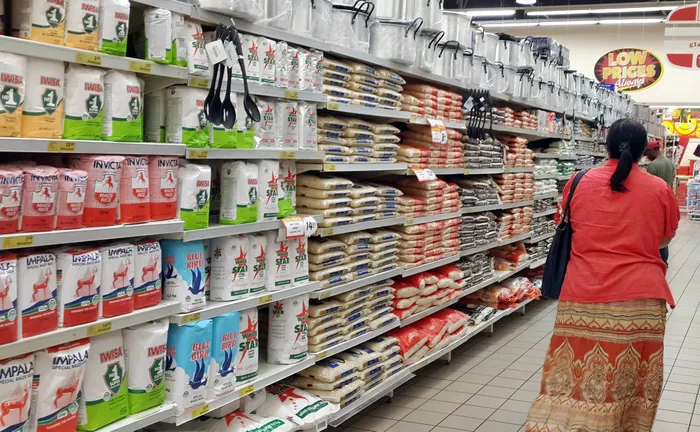Food costs continue to bite consumers

Consumers are yet to feel the benefit of lower input costs. Picture: David Ritchie/African News Agency (ANA)
While production costs of bread and wheat among others have fallen consistently over the past two years, consumers are yet to feel the benefit of lower input costs with producer and retail prices yet to decline.
This is according to the Competition Commission Essential Food Pricing Monitoring (EFPM) Report released on Wednesday, which found that despite inflation reaching its lowest level since October 2021, food prices remained high.
The commission said it was monitoring essential food prices throughout the value chain, to see whether consumers were harmed by the state of competition throughout food value chains.
The EFPM report highlights comparative trends in grocery retailer margins to global peers Canada, Ireland, and the UK, and shared evidence of “rocket and feather” effects, which means prices were quick to rise in response to a cost increase, but were slow to fall when costs decreased.
It found the weighted profit margin for South African retailers went from 5.6% in 2020 to 6.0% in 2022.
It fell to 5.3% in 2023, but remained higher than profit margins in Ireland and the UK.
“Recent analysis shows that margins earned by bread and maize meal producers continue to grow in 2023, despite some easing cost pressures.
“For bread, falling wheat prices in the period up to April were not reflected in producer or retail prices immediately, but those prices are now starting to come down.
“Maize meal producers and retail prices now show evidence of the feather effect following the recent fall in white maize price.
“Listed producers of bread and maize meal have all reported that they increased prices to compensate for higher costs.
“However, in some cases margins have expanded which suggests price increases more than costs among other factors.
“The impact of higher prices on volumes and profitability is mixed with larger players having been more successful at transmission than their smaller counterparts in these markets,” the commission found.
The report also found that load shedding costs had been reported by most food companies, with the exception of poultry.
In terms of beef, carcass prices had been falling since September 2022 but retail margins remained high.
Francina Nkosi from the #PayTheGrantsPeople's campaign said women were bearing the burden of high food prices.
“We have families to feed and things just keep getting more and more expensive.
“For companies it’s about making bigger profits, if they say something must go from R50 to R100, they just decide without thinking about us and how we are supposed to cope with the little money we have.
“Government is not doing enough to hold corporations accountable, they need to monitor food prices regularly and make sure price allocations are fair,” she said.
Fight Inequality Alliance South Africa national co-ordinator, Wafaa Abdurahman, added that it felt like the government treated big business with “kid gloves”.
“Food insecurity and inequality is increasing, people are hungry.
“When they increase VAT, the ordinary person pays more for food but they don’t introduce things like wealth tax instead, because what are they paying back into the fiscus?” she asked.
Cape Times
Related Topics: